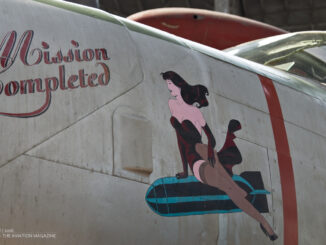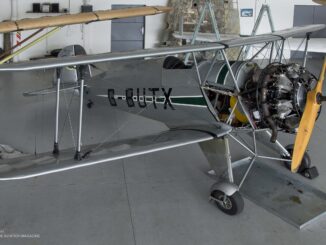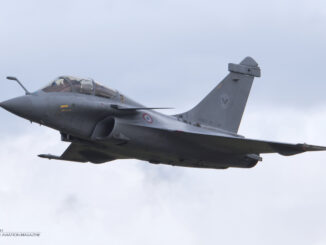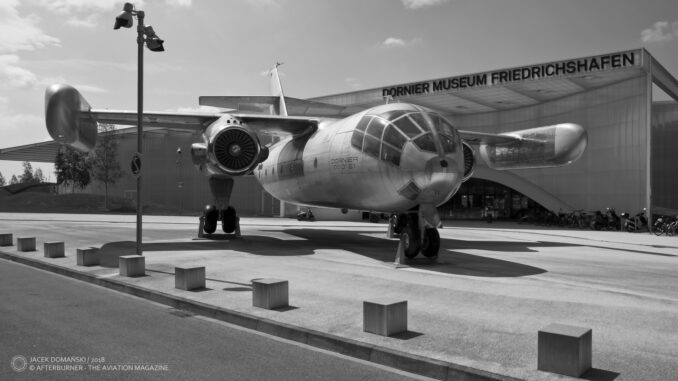
The city of Friedrichshafen is inextricably linked to the history of German aviation. Here, on the northern shoreline of Bodensee (English: Lake Constance), Count Ferdinand of Zeppelin located his dirigible factory and developed his famous airships. A little bit later, Friedrichshafen became a home for Dornier Flugzeugwerke and also a location for an engine manufacturing company owned by Wilhelm Maybach, as well as a seat of ZF Friedrichshafen AG, a world-known producer of gears and transmission systems.
Ghosts of Zeppelin and Dornier are still walking through the streets of Friedrichshafen and the legacy of those two aviation pioneers and designers is creating an incredible spirit of that city. Not surprising that each of them has a dedicated museum there – Zeppelin Museum Friedrichshafen, located in the city centre, in the former building of harbour railway station (Hafenbanhof); and Dornier Museum Friedrichshafen, located at the airport, about 4 kilometres from the centre. And it will be exactly the latter, we pay our visit in this article.
The Dornier Museum Friedrichshafen is among the young museum institutions, as it was opened only in 2009. An initial idea was born someday in the early 2000s, being supported by Silvius Dornier – the third son of Claude Dornier, the aircraft designer.
Showing the history of aviation and space industry over the past hundred years is the main task of the museum, certainly with particular focus on projects and developments of Claude Dornier and Dornier company. Opening of the Dornier Museum Friedrichshafen has required a significant investment of more than 30 million EUR, raised inter alia by Dornier Foundation for Aviation.
A foundation stone of the museum building was laid on 14th May 2007. Its construction, designed by Allmann Sattler Wappner Architects, reminds an aeroplane hangar – in this way creating a perfect connection between the collection and its location, just at Friedrichshafen airport. A special night illumination of the building should be also emphasized here. It was developed by James Turrell, an internationally recognized space-light artist and privately an aviation enthusiast and historical aircraft owner.
Apart from the space for an aircraft collection, the main building houses a restaurant with a terrace, museum shop, cinema, children facility with a playground and rooms for art exhibitions. The roof-covered exhibition has an area of approximately 6,000 square metres on two levels, with an additional 25,000 square metres of the open air display.

It is recommended to start a visit in the Dornier Museum Friedrichshafen with an exhibition located in so called ´museum box´. Being a kind of building-in-building structure, the box is located inside the main framework and offers an incredible journey through the history of aviation and space travel. And in addition provides a huge amount of information about Claude Dornier, his visions and aircraft he designed.
Several modern-arranged rooms are full of pictures, documents, multi-media exhibitions, artefacts and models. And supposedly, most visitors will be surprised with number of projects Dornier and his company created over the years. From his pioneer projects, first all-metal aircraft, through the Do-X, a flying boat with 12 engines and at that time the largest passenger aircraft in the world, until the World War II combat aeroplanes – the display in the museum box leads the visitor through time, finally facing him with the era of space travels.
The aircraft collection being exhibited in the Dornier Museum Friedrichshafen is divided in two sections – a hangar area in the main building and an open-space display. It offers a perfect overview of aviation projects the Dornier company was involved in after the World War II.
It starts with Do 27 STOL utility aircraft, being the first serial-produced aircraft of German design after the war. Although, when the World War II ended, a ban was imposed on German aviation industry, Dornier managed to open a construction bureau in Spain, where he worked on Do 25 utility and liaison aircraft. Shortly afterwards, it was developed into an improved variant, being designated Do 27 and initially manufactured in Spain, as CASA C-127. When the ban on aviation manufacturing in Germany was lifted in the mid-1950s, the serial production was also launched there.
Then there are a few examples of Do 27 successor – a Do 28 STOL utility aircraft and its upgrade, a turboprop-powered Do 228. They include Do 28A1, Do 28D2 Skyservant, Do 228 Liesl or Do 228 Polar 4 (the latter being developed for Alfred-Wegener-Instituts, with the ability to land and take-off from a snow/ice covered surfaces). Dornier experimental aircraft are represented by Do 29 tilt-propeller STOL aeroplane and Do 31 VTOL transport jet.
The aircraft collection in Friedrichshafen also contains aircraft being once manufactured by Dornier under license or as a joint project with another aviation manufacturers. Starting from Alpha Jet trainer (designed and produced together with Dassault); then Breguet Br.1150 Atlantic (being manufactured by SECBAT consortium, with Dornier as one of the partners) – being also the biggest aeroplane exhibited in the museum; Fiat G91 (a licence production by Flugzeug-Union Süd, consisting of Messerschmitt, Heinkel and Dornier) and finally Bell UH-1D helicopter (being manufactured by Dornier under licence).

Pre-war aircraft are being represented by full-scale replicas of Dornier Merkur, an airliner designed and introduced in 1925, and Dornier J Wal flying boat (a N25 aircraft, that once participated in an expedition to the North Pole).
A Dornier 328, turboprop-powered short-range passenger aeroplane, together with its jet-powered development, Dornier 328JET, are closing the aircraft collection at Friedrichshafen. Those two commuter airliners were the last aircraft developed and mass-produced under the Dornier brand. The aviation division of Dornier was acquired by Fairchild in 1996, creating a Fairchild Dornier GmbH company. Both Do 328 and 328JET were manufactured until the early 2000, when the company declared bankruptcy in April 2002 and Dornier aviation subsidiaries were taken over by Airbus group.
It is important to mention here two other aviation projects, being launched by Dornier family, in order to restore the brand. The first was Dornier Seastar, a turboprop amphibious aircraft designed in 1984. Only two prototypes were built and the aircraft never went into serial production, despite several attempts (although there are some rumours about new Chinese investors and launching the production later this year). The second one was Dornier S-Ray 007, a re-development of Dornier Libelle amphibious aircraft from the 1920s. This aircraft performed its maiden flight in 2007 and also remains at the prototype stage.
And returning to the museum, an interesting space exhibition must be also mentioned. At least seven satellite replicas can be seen there, including ISEE -B (International Sun-Earth Explorer), Ulysses – the first inter-planetary probe to the poles of the sun, ERS (European Remote Sensing Satellite) and MetOP (Meteorological Operational Satellite).
The visitors to the museum can also get familiar with equipment and systems used with the space exploration. Among them there are the Faint Object Camera, being installed in the Hubble Space Telescope; High Resolution Stereo Camera from Mars Express mission, ELLI – Ellipsoidal Mirror Furnace, TEMPUS – Electromagnetic Containerless Processing Facility and Speltra satellite launch structure for Ariane 5.
Last but not least, there are also few unmanned aerial vehicles, the so-called ´Baracke Seemoos´ workshop, being considered a nucleus of the Dornier company and finally a prototype of kidney-stone crusher – representing a Dornier medical division. And in addition, there is a Dornier Do 27 flight simulator in the museum.
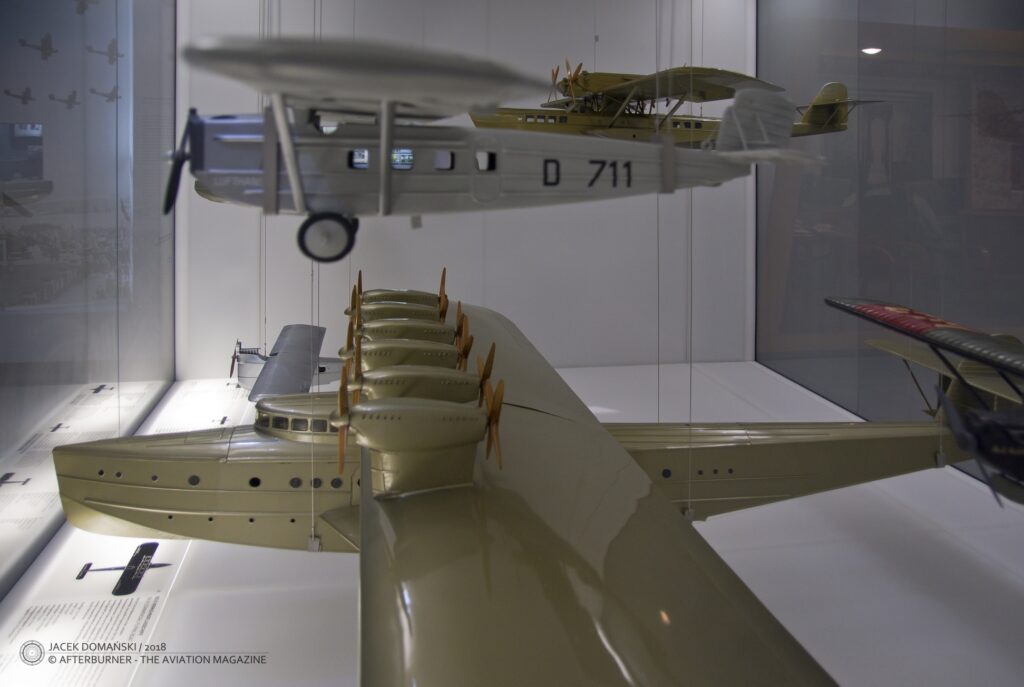
It should be noted that the Dornier Museum Friedrichshafen is really a friendly place for any aviation enthusiasts. There is a possibility to get close to most of the aircraft, there are steps and other items allowing the visitor to get a look into a cockpit and also interior of few aeroplanes is accessible – there is, for example, a possibility to get onboard the Breguet Atlantic, or take a close look of its bomb/torpedo bay.
The museum shop offers a variety of aviation souvenirs and some Dornier-related specials. We especially recommend the Dornier Espresso – a special coffee as being served on board of Do-X, during its transatlantic flight.
In the summer season (May – October) the Dornier Museum Friedrichshafen is open daily from 10:00 until 17:00 hours. From November to April, the museum is open from Tuesday to Sunday, 10:00 – 17:00 hours, and in the 1st Thursday of every month until 20:00 hours.
A regular entrance fee is 11 EUR, but there are several possibilities to combine the museum ticket with public transport fare, entrance to Zeppelin museum (with one combined ticket for both museums), Lake Constance catamaran service or Do-X restaurant offer. The Do 27 simulator means an extra cost – 6 EUR for 15 minutes or 65 EUR for one hour (subject to prior reservation).
There is a car park located close to the museum, with 90-minute free-of-charge period for museum visitors. In addition, the museum is easily available by the public transport from the centre of Friedrichshafen (with a reduced fare for a return ticket). Lockers are provided as standard.
Nevertheless, if you plan to go to Friedrichshafen and visit the Dornier Museum, we recommend to check the event calendar first. And that´s because this is a really living place! An exhibition area of 3,000 square metres is available for rent and several seminaries, conferences, fairs and other events are being organized there during the year – partially in the exhibition area. And the number of them is really huge, according to the official information of the Dornier Museum Friedrichshafen, up to 150 events per annum are held at the museum.
Thus, it may happen that you arrive there and a part of the museum aircraft exhibition would not be available to general public (or you can get there only when paying an admission fee to the event). This is exactly what happened when we visited the museum in 2018 but, for some reasons, other date was not available for us. However, in situations like that, the museum entrance fee is significantly reduced – and there is still a possibility to enjoy a major part of the exhibition, so don´t let that stop you from visiting this amazing place!
More images from Dornier Museum Friedrichshafen:

Information from official press materials of Dornier Museum Friedrichshafen were used.















